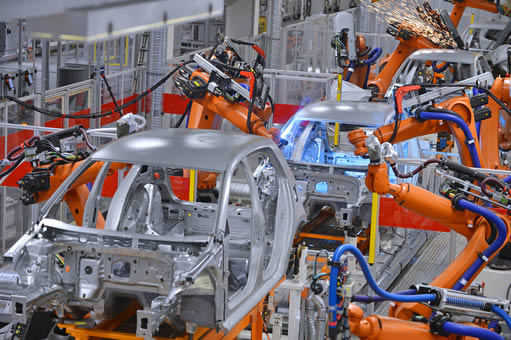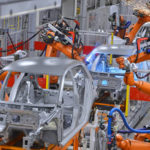
The manufacturing industry has recently seen unparalleled changes and growth that not only cut costs, but add precision, flexibility, and efficiency to the manufacturing process. In addition, processes are quicker and involve less human intervention.
Manufacturing companies simply can’t afford to ignore these technology trends because the return on investment is just too significant and the risk of becoming less competitive and obsolete is just too great.
Robotics
Some manufacturing companies are using robots alongside human workers in what has been termed “cobotics.” This combination makes difficult or complex parts of the manufacturing process easier and safer. The aerospace and automotive industries, in particular, have found great success with cobotics, and other industries are already following their lead.
Nanotechnology
We already are experiencing the first generation of this futuristic technology in space technology and biotechnology. Manipulating matter on atomic, molecular, and supramolecular scales, manufacturing has the potential to be more precise than it ever has been before. Computer processing is already faster, memory cards are smaller yet hold more memory, and several products now last much longer.
The Internet of Things
The Internet of Things (IoT) is another technology trend that is destined to make significant changes in the manufacturing industry. The IoT allows electronic devices that are connected to each other to communicate without human intervention, creating a connected factory. The impact this can make on manufacturing is huge. Connected devices can send signals and notifications to each other, such as a notification of a damaged part. With the devices communicating instantaneously about errors, downtime will be significantly reduced, while quality of manufacturing will be increased.
Not only does the IoT allow for communication about errors, it gathers data and provides insight that informs smarter, more cost-effective decisions. It allows for immediate, ongoing analysis that benefits decisions.
When a CMMS is being used in a factory, the impact of the IoT is even greater, as managers have the ability to predict needed maintenance. Operators can detect a maintenance need instantaneously, meaning waiting for a system to fail is a thing of the past. In fact, you can even accurately predict a future failure as the machines communicate with each other. Repairs can happen immediately within the system, even incorporating CMMS data on previous repairs into decision making. The data collected by CMMS helps determine what should be done and when.
Augmented Reality
More than a video game, augmented reality is being used in the manufacturing industry to increase accuracy within tasks. Video clips or text instruction walk workers through processes and procedures as they see them superimposed onto goggles. This eliminates error as workers are guided in real time.
Cloud Computing
Cloud computing makes a significant impact on manufacturing, especially when a company uses different plants in separate geographical locations. A network of internet-connected remote services can manage, store, and process data. Because of security concerns, cloud computing has been slow to take off in the manufacturing industry, but it is beginning to become more and more widely used as manufacturers see the benefit to sharing data efficiently. This helps in the speed of production as well as with quality control.
Predictive Maintenance Technology
Collecting, processing, and measuring big data in real time allows those in the manufacturing industry to increase efficiency. Predictive maintenance technology gives managers a prediction of potential problems or defects, allowing managers to make real-time decisions that will reduce costs.
New technology is advancing time-honored processes within the manufacturing industry. Those who embrace the new technology will find that processes can be improved, efficiency can be enhanced, and costs can be reduced.

